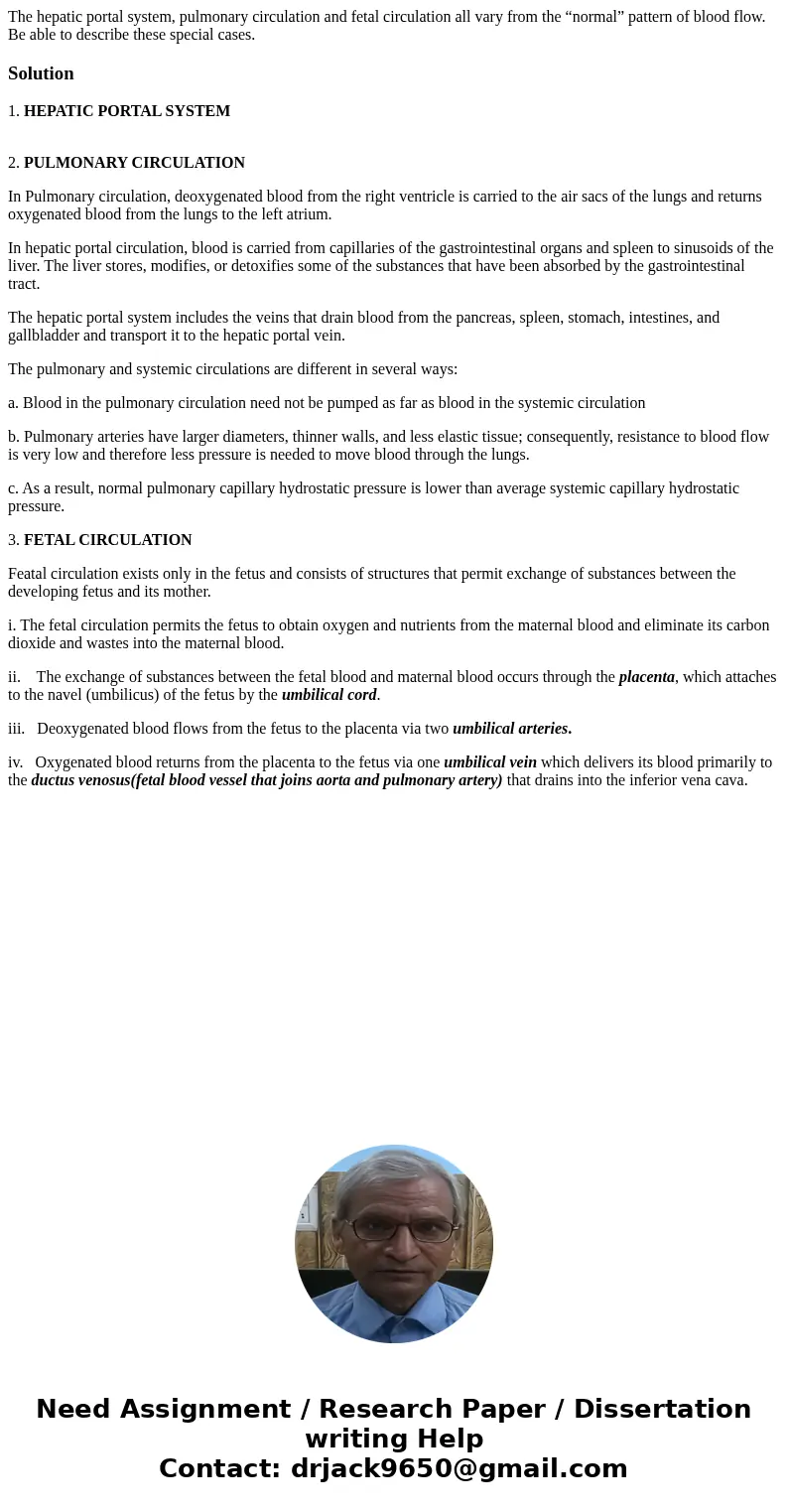The hepatic portal system pulmonary circulation and fetal ci
The hepatic portal system, pulmonary circulation and fetal circulation all vary from the “normal” pattern of blood flow. Be able to describe these special cases.
Solution
1. HEPATIC PORTAL SYSTEM
2. PULMONARY CIRCULATION
In Pulmonary circulation, deoxygenated blood from the right ventricle is carried to the air sacs of the lungs and returns oxygenated blood from the lungs to the left atrium.
In hepatic portal circulation, blood is carried from capillaries of the gastrointestinal organs and spleen to sinusoids of the liver. The liver stores, modifies, or detoxifies some of the substances that have been absorbed by the gastrointestinal tract.
The hepatic portal system includes the veins that drain blood from the pancreas, spleen, stomach, intestines, and gallbladder and transport it to the hepatic portal vein.
The pulmonary and systemic circulations are different in several ways:
a. Blood in the pulmonary circulation need not be pumped as far as blood in the systemic circulation
b. Pulmonary arteries have larger diameters, thinner walls, and less elastic tissue; consequently, resistance to blood flow is very low and therefore less pressure is needed to move blood through the lungs.
c. As a result, normal pulmonary capillary hydrostatic pressure is lower than average systemic capillary hydrostatic pressure.
3. FETAL CIRCULATION
Featal circulation exists only in the fetus and consists of structures that permit exchange of substances between the developing fetus and its mother.
i. The fetal circulation permits the fetus to obtain oxygen and nutrients from the maternal blood and eliminate its carbon dioxide and wastes into the maternal blood.
ii. The exchange of substances between the fetal blood and maternal blood occurs through the placenta, which attaches to the navel (umbilicus) of the fetus by the umbilical cord.
iii. Deoxygenated blood flows from the fetus to the placenta via two umbilical arteries.
iv. Oxygenated blood returns from the placenta to the fetus via one umbilical vein which delivers its blood primarily to the ductus venosus(fetal blood vessel that joins aorta and pulmonary artery) that drains into the inferior vena cava.

 Homework Sourse
Homework Sourse